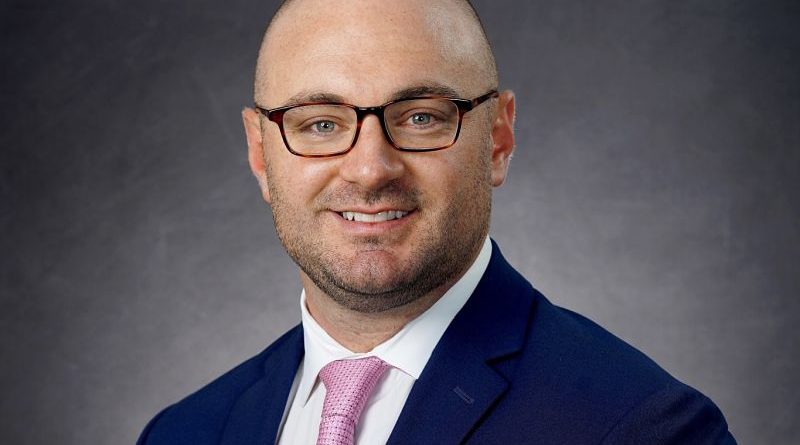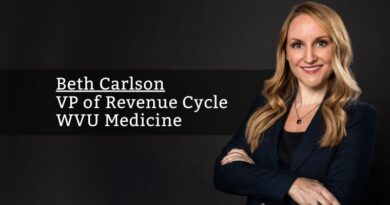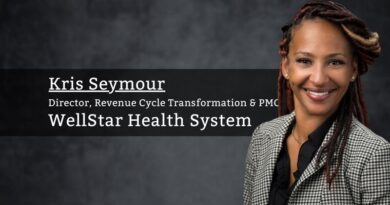Leveraging Revenue Cycle Technology to Enhance the Patient Experience
By Christopher Ault, VP, Revenue Cycle, Cooper University Health Care
As healthcare continues to transform into a consumer-driven marketplace, it’s incumbent on every employee of every provider organization to understand how they can positively impact the patient experience at their facility. We have marketing teams dedicated to attracting patients to the health system. Once they’re here, we have clinicians who take tremendous pride in providing the best health care to improve patients’ lives. So when it comes time for the patient to interact with the revenue cycle, why should it be any different?
At Cooper University Health Care, our focus is creating a best-in-class patient experience by leveraging technology in a way that allows our employees to focus more on the patient and less on the trivial headaches that historically come with revenue cycle work. Over the past twenty-odd years, technology in the revenue cycle has transformed a notoriously labor-intensive line of business into one that is much more automated. Perhaps the changes are moving too fast for many of us to keep a handle on. If you have ever been through a revenue cycle system conversion or implementation, you know that automating age-old manual processes creates challenges that make you question whether you know your own name at times.
As an industry, we’ve come a long way. We can now automate insurance eligibility. Patients can schedule their own appointments and pay their bills online. Medical records can be shared across multiple health systems to avoid mistakes and delays in care. We can code simple visits with computers alone. We can predict denied claims before they ever get adjudicated. The vast majority of our transactions with payers are now electronic. We can receive massive electronic remits, reconcile, and post them without even the click of a button. All of this has put our industry in a position to transform the way we think about the revenue cycle and its role in patient satisfaction.
At Cooper University Health Care, we implemented a new revenue cycle platform to integrate with our EHR in 2016. Over the past three years, we’ve experienced all of the benefits (and stress) that come with implementing these technological advances. Three years later, we have a stronger cash position, cleaner claims, and a more efficient business processing system. Through the pursuit of operational excellence in our business practices, we have been able to turn our attention where it should be: the Patient.
Not surprisingly, patient complaints to our billing office have reduced nearly 50% year-over-year.
As leaders in any healthcare organization, I believe it is our top priority to make our employees’ work as efficient, effective, and enjoyable as we can. By pursuing technology that will enhance employee engagement and satisfaction, we believe that it ultimately leads to a better experience for our patients. By engaging our employees in the design process of technology, you can mitigate their fear in what efficiency and automation will mean to them. Employees get to see what having more time allows them to do, and how it impacts the lives of real people each and every day. We take great pride in finding ways to impact patient satisfaction in each area of our Revenue Cycle.
Here are some of the ways that technological advances will allow us to focus on customer service:
In Healthcare Access, streamlining eligibility allows our team to spend less time on the payer portals and allows them more time the phone with our patients. Triangulating this data with contract management and CPT-driven orders will allow us to automate patient estimates. Our Financial Navigation Team is working to contact every patient before their scheduled procedure and explain their out-of-pocket cost and answer any questions they may have about their benefits or payment options. This allows patients to make informed decisions and to avoid the “sticker shock” bills after they receive their care. Not surprisingly, patient complaints to our billing office have reduced nearly 50% year-over-year.
In Transitional Care Navigation (Social Work/Case Mgmt.), our teams have worked with our IT partners to implement real-time avoidable day tracking within the EHR. This allows our Transitional Care professionals to strategically drive improvements in length-of-stay, resulting in more efficient patient throughput and reduced delays in discharge.
In Health Information Management (HIM), we are implementing A.I. technology that will help us to prioritize charts for Clinical Documentation Improvement, Coding Quality, and Accuracy. This will ensure that the patient’s care is captured and documented completely with the patient’s insurance company, ultimately avoiding unnecessary denials. Many times, disagreements in coding can lead to denials or unexpected claim adjudication behavior which can affect the patient’s bill.
In our Business Office, our systems are working to identify incorrect patient balances, incorrect denials, and comply with regulatory requirements much more seamlessly than ever before. When processing over a million claims each year, being able to highlight the exceptions and work them timely has allowed us to actively handle what would have been a dissatisfying situation for our patients.
Seems simple, right? Well-deployed technology creates happy employees, which results in satisfied patients. It is simple, until the technology or the names on the badges change. If you want to deliver a consistent patient experience, you must deliver consistent training and education to your team. That is why, at Cooper, we have created a Revenue Cycle Training and Education department. This group is focused on hard-wiring the progress we’ve made operationally so that our teams can continue to focus on service to our patients. With the ever-changing landscape of payer rules, government regulations, and system upgrades, training and education is the grease that keeps the wheel turning.
Pursue operational excellence, install technology smartly to let your people shine, and hardwire the process with training and education. Your patients will see the difference. After all, isn’t that why we’re all here in the first place?



